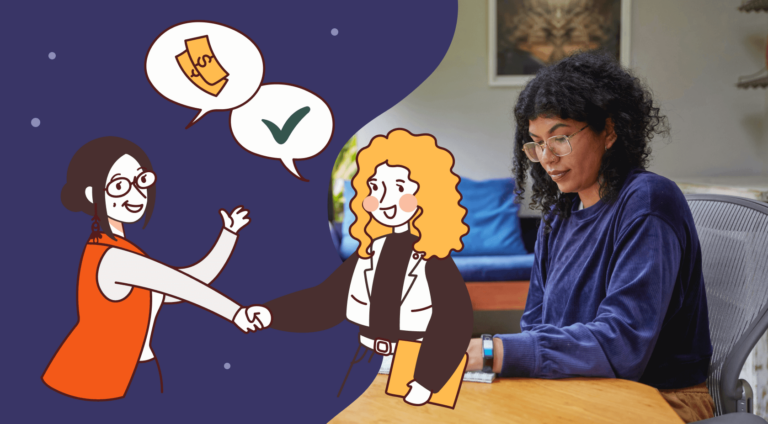Did you know that email marketing has the highest ROI (return on investment) of any marketing channel? It shouldn’t be that surprising when you think about it – after all, email is personal, direct, and relatively easy to track.
But if you want to make complete use of the current email trends, you need to dip your toes into message automation. It’s a fairly new concept, but one that is growing in popularity due to its potential to save time while still delivering a high-quality customer experience.
What Is Email Automation?
Let’s be real – manually typing out and sending promotional emails sure is a time-consuming process, especially if you’ve got a long list of potential customers. Not only does each one require its own unique message, but you also need to keep track of who you’ve already contacted, when you reached out, and what type of response (if any) you received.
To save yourself some time and hassle, you can use message automation as part of your email marketing campaign. This involves setting up emails in advance and using triggers to determine when and where they should be sent. It allows you to have full control over the process while still being able to focus on other aspects of your business.
So no wonder, businesses now rarely manually send out emails for customer acquisition and turn to email automation instead.
But one important question arises: how do you set up your email campaign for the best results?
Relax, we’ve got you covered. You’ll find some of the best pracitces for email automation right below!
How Can You Implement Email Automation?
Your online marketing presence determines your customer acquisition and retention strategy. Using automation can increase the effectiveness of your campaign efforts and turn prospects into actual clients, giving them the opportunity to consistently engage with your brand and eventually make a purchase.
The goal of email automation is to send the right message, to the right person, at the right time. If done correctly, it can be an extremely valuable tool in your customer acquisition arsenal.
Use Audience Analytics
You can’t exactly sell any kind of product or service to just anyone – that’s a surefire recipe for disaster. There’s no point in trying to sell a high-end luxury car to someone who can barely afford a used hatchback, is there?
Before you start sending out promotional emails, you need to take some time to analyze your target audience. Track their behaviors, interests, and interactions with your domain. What are their needs? What are their pain points? How can you address them?
Creating buyer personas is a great way to segment your target audience and figure out which type of message will resonate the most. Once you’ve got a good understanding of who you’re trying to reach, you can start crafting your email content.
Putting the clients into categories will help you send targeted content to specific groups. This way, you’re not just spraying and praying – you’re actually taking the time to connect with your customers on a personal level.
Create an Automation Trigger
Every automation campaign starts with a trigger – an event that sets the whole process in motion. You should pay close attention to what kind of trigger you want because it will determine when and how often your email is sent out.
Generally speaking, there are two types you can use for your marketing campaign:
- time-based triggers – go off at a specific date and time, such as an anniversary or holiday. You can use them to mark special occasions or to send out timely content, like a monthly newsletter. At this stage, you can also do DMARC configuring to ensure email deliverability and security.
- behavior-based triggers – are determined by the actions of your subscribers. For example, you can set up a trigger that sends an email whenever someone hasn’t visited your site in 30 days or has visited the pricing page in the last 24 hours.
You can also use a combination of both time and behavior-based triggers to achieve the desired effect. This will give you a lot more control over how your clients receive and process your promotional content, all while saving you time and effort in the long run.
Send Follow-Up Promotional Materials
Here’s the thing – these days, we’re all inundated with marketing emails. Inboxes are overflowing and, as a result, many of us have developed email fatigue. Promotional messages are often met with a resounding *eye roll*, especially if they’re not relevant to our interests. In most cases, we just remove the notification or delete the email entirely without even batting an eye.
A partial solution to this problem is using a CRM or a client portal, like Zendo that lets you communicate with your clients through an easy-on-the-eye chat instead of email, therefore, easing some of the struggles of email fatigue. Unfortunately, it won’t help you reach new customers directly, in which case you still need to stick with email automation.
So to make sure your marketing emails don’t end up in the trash, you need to send follow-up messages that are both relevant and engaging. If someone hasn’t responded to your initial offer, reach out again with a different message or an updated offer.
If someone sees your brand more than once, they’re more likely to remember it when they need your product or service. According to the RAIN Sales Training Group, it takes up to 8 touchpoints for a customer to make a purchase. Just make sure you’re not being too pushy – nobody likes a nag.
And – perhaps most importantly – you should include special promotions such as discounts or coupons in your follow-up message. This will give recipients an incentive to take action and, hopefully, make a purchase. After all, who doesn’t like a good deal?
Personalize the Content
When you’re sending out mass emails, it’s all too easy to forget that there are real people on the other end. You don’t want to sound robotic or detached since that will do nothing but turn people off.
Personalizing your emails – even in a small way – can make a big difference in how they’re received. If you have the recipient’s name, be sure to use it. Addressing your customers by name will make them feel valued and appreciated, two things that are essential for building a strong relationship.
Dig through your segmented content and figure out what other personalization options you have. If you know where your subscribers are located, you can include local references or current events in your message.
This will show that you’re paying attention and that you care about what’s going on in their world. In an industry where it feels like most marketers only care about making a sale, this can be a breath of fresh air and actually encourage people to get on board with your brand.
Include a CTA
Your email might be well-written and full of relevant information, but it won’t do much good if people don’t know what you want them to do with it. You should have a CTA – or call-to-action – prominently displayed in every email you send.
This can be anything from clicking on a link to following you on social media. If your clients are able to reach you in a timely and effective manner, they’re much more likely to do business with you.
Do regular checks on the links in your email to make sure they’re still working and are up-to-date with the latest information. If you happen to change any existing details – such as your website URL or contact information – you should update your email accordingly. The last thing you want is for people to click on a dead link and come up empty-handed.
Focus on Mobile Optimization
In today’s digital world, it’s estimated that over half of all emails are opened on a mobile device – a number that’s only going to grow in the coming years. It’s no surprise, then, that mobile optimization should be a key focus for anyone doing email marketing.
The smaller phone screens we’re all oh-so-fond of can make it difficult to read long emails or click on links. In some cases, people have to zoom in to be able to see what’s going on – and even then, it can be a challenge.
And if we’re being honest, no one wants to go through the trouble of zooming in and out just to read an email. If your message isn’t easily accessible on a mobile device, there’s a good chance it will be deleted without being opened.
To avoid this, keep your emails short and sweet. Include large, clickable links and clear images that can be seen without excessive scrolling or zooming. Dark mode is also important, as many mobile devices have the dark mode set, so emails might not be displayed correctly if their content is not tested and optimized for dark mode. Making your emails mobile-friendly will ensure that they’re seen by as many people as possible.
Know Your Business Goals
At the heart of every successful marketing campaign is a clear understanding of what you want to achieve. Whether you’re looking to boost sales, increase brand awareness, or drive traffic to your website, you need to know your goals before you can create an email strategy that will help you reach them.
Map out your current business strategies to get a better idea of what’s working and what’s not. Keep in mind that your goals should be specific, measurable, achievable, relevant, and time-bound – otherwise known as SMART goals. This will help you create a plan that caters to your specific needs and ensures that you’re able to track your progress along the way.
Finishing Thoughts
With the power of email automation, you can take your customer acquisition to the next level. By taking the time to understand your audience and create targeted content, you can build meaningful relationships and generate real results.
If you add a pinch of personalization, optimize for mobile, and focus on your business goals, your online presence can help you reach new heights. From there, it’s up to you to continue providing value and delivering on your promises. With a little effort, you can create a customer base that’s loyal, engaged, and eager to do business with you.

A free online training. Delivered daily to your inbox to grow your productized agency.











